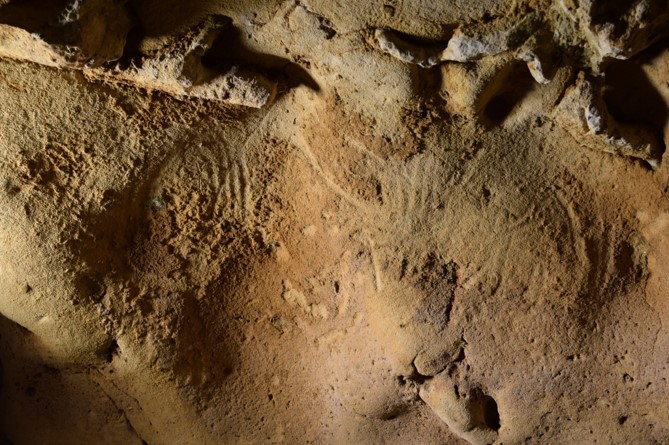
Engravings made on the walls of the cave of Roche-Cotard (Indre-et-Loire, France) using fingers have recently been dated to over 57,000 years ago. Created by Neanderthals, these engravings make Roche-Cotard the oldest known decorated cave with engravings in France - and possibly even in Europe.
Through experimental studies and precise measurements using state-of-the-art methods, researchers were able to conclude, based on the shape, spacing, and arrangement of these engravings, that they were deliberate forms created by human hands and could not have been made after the cave's opening in 1912.
These interdisciplinary works involved members of an international collaborative research project, including researchers from the University of Tours in archaeology (CITERES-LAT, CNRS/University of Tours) and geology (GEHCO), as well as the Maison des Sciences de l'Homme. The findings were published in the scientific journal PLOS ONE on June 21, 2023.
Discovered in 1846, the cave of Roche-Cotard remained inaccessible until 1912 when the owner of the land cleared the sealed entrance, which he documented in a note in 1913, accompanied by photos and a plan. In 1976, Jean-Claude Marquet, then at the University of Dijon, resumed excavations at the site. After a long period of waiting, research work resumed in 2008, which allowed for the analysis, contextualization, and dating of the engravings. These engravings were made on a tuffeau wall, a soft stone found in the regions around the Loire River, spanning about twelve meters in length and covered, in its upper part, by a thin weathering film. They consist of a series of non-figurative panels interpreted as finger marks, most of which were created by either simple contact of the fingertip or by dragging the fingertip across the wall surface. One of the panels was likely made with a tool.
The question arose as to when and by whom these engravings were made. Study of the layers revealed that the cave had been partially flooded multiple times by the Loire River, which currently flows two kilometers away from the site. Over the millennia, flood sediments invaded the cavity and eventually sealed the cave entrance, burying it under several meters of deposits. The closure could be dated by determining the age of these deposits: the obtained dates indicate that the cave was closed approximately 57,000 years ago, a period when Homo sapiens was not yet present in Europe. Furthermore, the archaeological layers beneath the sediments contained Neanderthal tools, discovered in 1912. Thus, it was concluded that Neanderthals occupied this cave at least 57,000 years ago, leaving behind tools, animal bones, and, exceptionally, wall engravings, indicating that such artistic expressions were not exclusive to Homo sapiens.
Image : Cave engraving Roche-Cotard, c Université de Tours